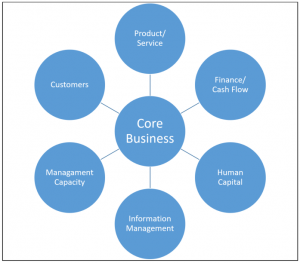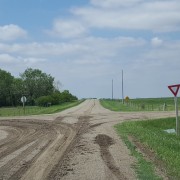Fred* wants to expand his farm. He feels he’s getting left behind when he hears about each land acquisition made by some of his neighbors. It’s not like Fred hasn’t expanded his acres; he’s doubled up since 2005 when he farmed about 3,000. But he knows he can handle more. And by all accounts he needs to increase his acres to spread out his equipment costs; at least that what he hears at all the seminars and reads in all the farm publications. His banker keeps telling him that his costs are too high as well, but she wouldn’t give him a combine loan a couple years ago and the dealer’s financing program did, so what does she know…?
Drawing up plans to seed just over 6,000 acres this spring, Fred can’t let go of the notion that he needs to be at 10,000 acres. There are a couple of neighbors who’ve hinted that they might not put a crop in this spring, and if Fred could take on both, he’d be at 10,000 acres. That would feel pretty good driving through town letting everyone know he was now a 10,000 acre guy! Heck, he might even put it on the side of his truck like some companies do with their safety awards. They’re proud of their accomplishments and show them off, why not Fred?
As he goes over his crop plan, he starts wondering about where he’ll procure his inputs. If he maxes out the lines of credit at both input dealers in town, and the one at the bank, he’ll be able to get everything seeded, fertilized, and sprayed. “No problem,” Fred thinks to himself. He gets on the phone to get prices from each input supplier so he can decide what to buy from whom.
About a week into April, Fred gets the word he was hoping to hear: both neighbors who were considering retiring will not be seeding a crop this year and will be renting out their land. Fred immediately gets in the truck to pay his neighbors a visit to see if he can secure a rental agreement with each of them. To establish good-will and earn the opportunity, Fred offers each $5 per acre cash rent above what they were asking. They shake hands, and Fred excitedly heads home.
Upon sharing the news with his hired help, Fred is too excited about his “accomplishment” to recognize that his lead hand is not happy about what Fred is telling him: the seeding rig will have to run 24 hours since there isn’t time to buy another air-drill and get it field ready. Fred heads back to the house to update his crop plan and to secure more crop inputs.
Two days later, Fred’s world comes crashing down:
- he is unable to get any more credit to acquire crop inputs for his additional rented land;
- he has been denied a new cash advance because he was late paying back the old one;
- he has lost his new rented land because he can’t get inputs and because the cheque he wrote to each landlord for upfront rent payment has bounced;
- his lead hand just quit to go work for a neighbor who provides a “better work environment.”
To Plan for Prosperity
They key is in the heading title: PLAN
Fred doesn’t plan; he reacts. He is not able to expand his farm even though he thinks he is. He is not as financially strong as he thinks he is because he cannot get more credit when he needs it. He is now short on help to get seeded on his own current acres. Fred wants to be bigger, but he’s overlooked being better.
At risk of “over-flogging” this issue, Fred’s challenge has been lack of working capital. And it is that lack of working capital that has not only directly cost him an expansion opportunity, but indirectly cost him his lead hand.
It’s been said that “if you fail to plan, you’re actually planning to fail.” Fred has become the embodiment of those words. The ramifications of this story go farther than we have time to discuss.
You can avoid falling in with the likes of Fred by enacting control over your future: implement strategic growth using sufficient resources with discipline.
*Fred is a fictional character. The story portrayed above is fictional. Any similarity to a real person or situation is purely coincidental.





